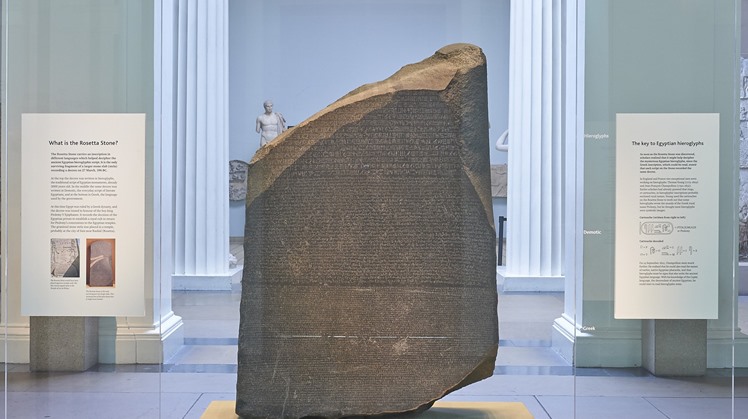Although there is some debate about the exact date of its discovery, it is likely that on July 19, 1799, during Napoleon Bonaparte's campaign in Egypt, a French soldier discovered a black basalt slab inscribed with ancient inscriptions near the city of Rosetta, about 35 miles east of Alexandria. The irregular stone contained fragments of passages written in three different scripts: Greek, Egyptian hieroglyphs, and Egyptian Demotic.
The ancient Greek on the Rosetta Stone told archaeologists that it was inscribed by priests in honor of the King of Egypt, Ptolemy V, in the second century BC, and what is most surprising is that the Greek passage declared that all three texts have the same meaning, and so the artifact was the key To solve the mystery of hieroglyphs, a written language that has been "dead" for nearly 2,000 years, according to the website History.
When Napoleon, an emperor known for his enlightened view of education, art, and culture, invaded Egypt in 1798, he took a group of scholars with him and asked them to seize all of France's important cultural artifacts. Pierre Bouchard, one of Napoleon's soldiers, was aware of this when he found a basalt stone, which was four feet long and two and a half feet wide, in a fort near Rosetta. When the British defeated Napoleon in 1801, they captured the Rosetta Stone.
Several scholars, including the Englishman Thomas Young, made advances in the preliminary analysis of the hieroglyphs of the Rosetta Stone. The French Egyptologist Jean-François Champollion (1790-1832), who taught himself ancient languages, deciphered and deciphered hieroglyphs using his knowledge of Greek as a guide. Hieroglyphs used images to represent objects, sounds, and combinations of sounds. Once the Rosetta Stone inscriptions were translated, the language and culture of ancient Egypt suddenly opened For scientists like never before.
 Tue, Jul. 19, 2022
Tue, Jul. 19, 2022